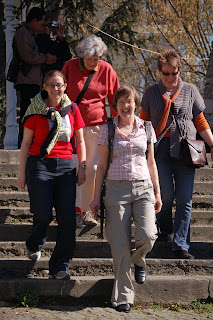 |
| Giving feedback to the boss? Don’t skirt around what you have to say. |
I have been following a thread of discussion on LinkedIn. The discussion, amongst fellow coaches, was prompted by a request along the following lines: Anyone got any suggestions for building rapport with a CEO whom the Board has asked you to coach, but who believes he’s doing a good job? I have the opportunity to have a couple of interactions with him before the Board lets him know they’d like him to work with a coach. Whilst the coach is at risk of tying himself in knots, most colleagues have encouraged him to establish clear boundaries with the Board. It’s for Board members to give clear and direct feedback to the CEO about the behaviours they find difficult. It’s for Board members to suggest that the CEO work with a coach.
The issue is common. I leave out the word “surprisingly” because why would it surprise us that a human being who’s risen to a senior position may do things we find difficult – unless, of course, we hold the view that organisations only recruit people into roles who are effective and well suited to the role. We’d like this to be true but it isn’t. Instead, we are faced with human beings in the role of the “boss”, people whose behaviours we find difficult. “He tells us he wants us to share our ideas but when we do, he dismisses them out of hand. It’s always his ideas that prevail”. “It’s been five years since I told her that John isn’t performing and he’s still sitting round the top table. Yes, she’s taken work away so he can’t do any damage but she needs to face the issue straight on so we don’t have to work around him any more”. “I’d like to actually have a boss – someone who is aware of what I do and who is able to give direction and support. Yes, I am pretty self motivated when it comes to it and still, I’d like to know how my work is seen in this organisation”. To these issues, I am sure you can add your own – because bosses rarely measure up and give us the support and direction we need, even though it’s in their job description to do so.
And it’s hard to give feedback. It’s hard because we find ourselves chafing against our expectation – of which we may or may not be aware – that it’s for the boss to know how to manage us. How come we are doing the work of managing our staff and we have to manage the boss as well?! It’s hard because the very reason the feedback is needed is because the boss has a blind spot and he or she does not enjoy hearing about behaviours of which s/he’s unaware. It’s hard because, at the end of the day, the boss is the boss – there is an inbuilt difference in the power he or she wields in the organisation. So we fear our boss’s response to any feedback we might give. Most of all it’s hard because to share our needs fully can leave us feeling vulnerable and exposed. More vulnerable and exposed than we like to admit.
There are ways around this. You can try to outsource the giving of feedback like the Board I mentioned right at the top of the page. You can talk about your boss to others – to your colleagues or your loved ones – declaring heatedly that he or she ought to know better. Hey! You can even change jobs in the hope of finding a better boss next time. These strategies protect you from the vulnerability of giving feedback. Some of them leave you with the same boss and the same behaviours and the same unmet needs. One of them may even leave you with a different boss and different behaviours and different unmet needs.
Some people even protect themselves from the vulnerability that can come from giving feedback by showering their boss with “shoulds” and “oughts” and even “good ideas”. “Don’t you think it would be a good idea if we checked in every few weeks to make sure we know we’re on track?” “I thought you might enjoy this article – it says that effective leaders should hold regular meetings with their teams”. Even when the “should” is not explicit, holding the view that our boss “should” (take time for one to one meetings, understand your need for clarity, lead more effective team meetings…) in some way protects us, placing the responsibility for change with the boss.
At the same time, if you want things to change, the ball is in your court. It’s time for self-examination: do you want this change enough that you’re willing to speak up or is this one you want to let go? And if you choose to speak up, it helps to be clear. Let your boss know what it is he or she does that doesn’t work for you and what behaviours you’d like instead. Be willing to share how these different behaviours would contribute to you so your boss can understand the significance of what you’re asking. Be willing to listen – there may be reasons why your boss chooses not to do what you ask. Focus on your needs and the boss’s – and explore how you can work together in ways which meet those needs.
More than anything, be prepared to learn. This kind of conversation, without exception, yields information. It’s not always information that’s easy to digest. It may be information about you (that you can make requests of your boss, for example, who always wondered why you weren’t more demanding). It may be information about your boss (that s/he knows what you say is right but may not follow through to action). It may be information about the wider organisation. Being better informed opens up choices. They may not be easy choices but they are better informed because you’ve had the conversation.
I wonder, are you ready to give feedback to your boss?







